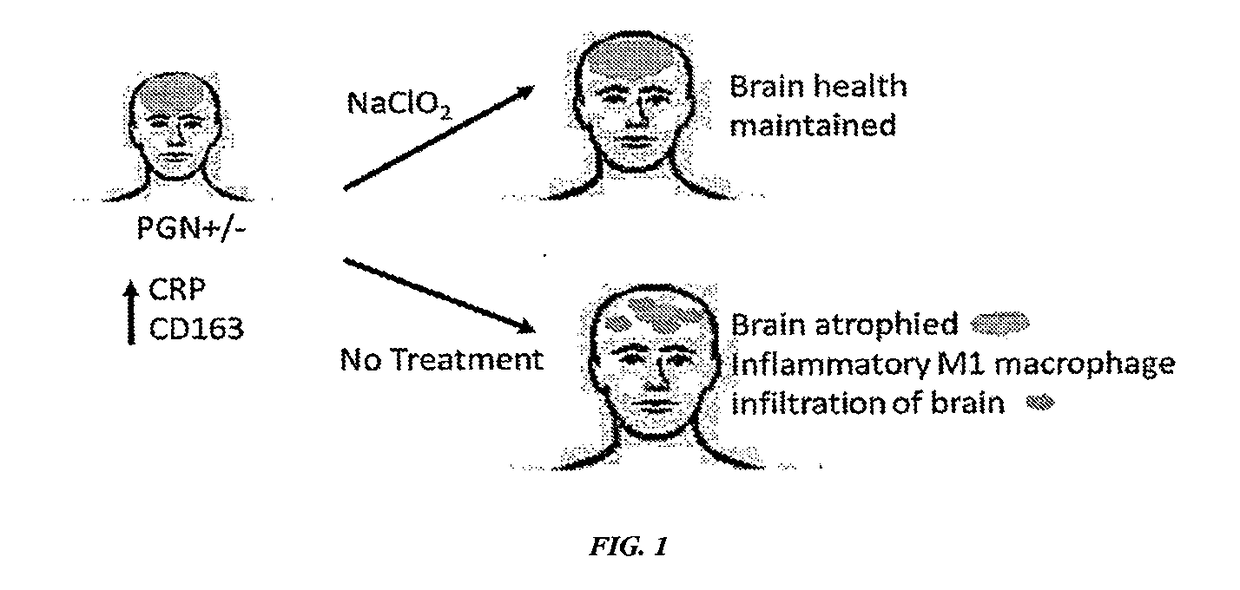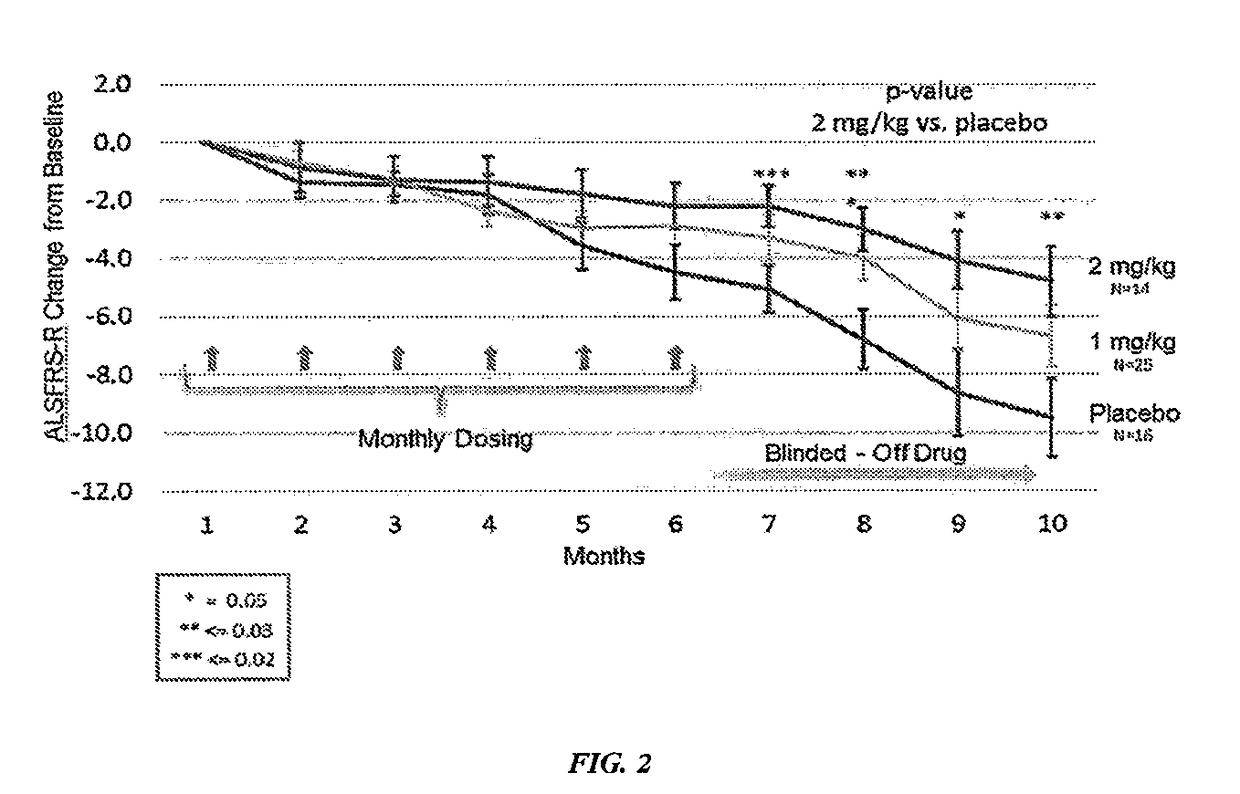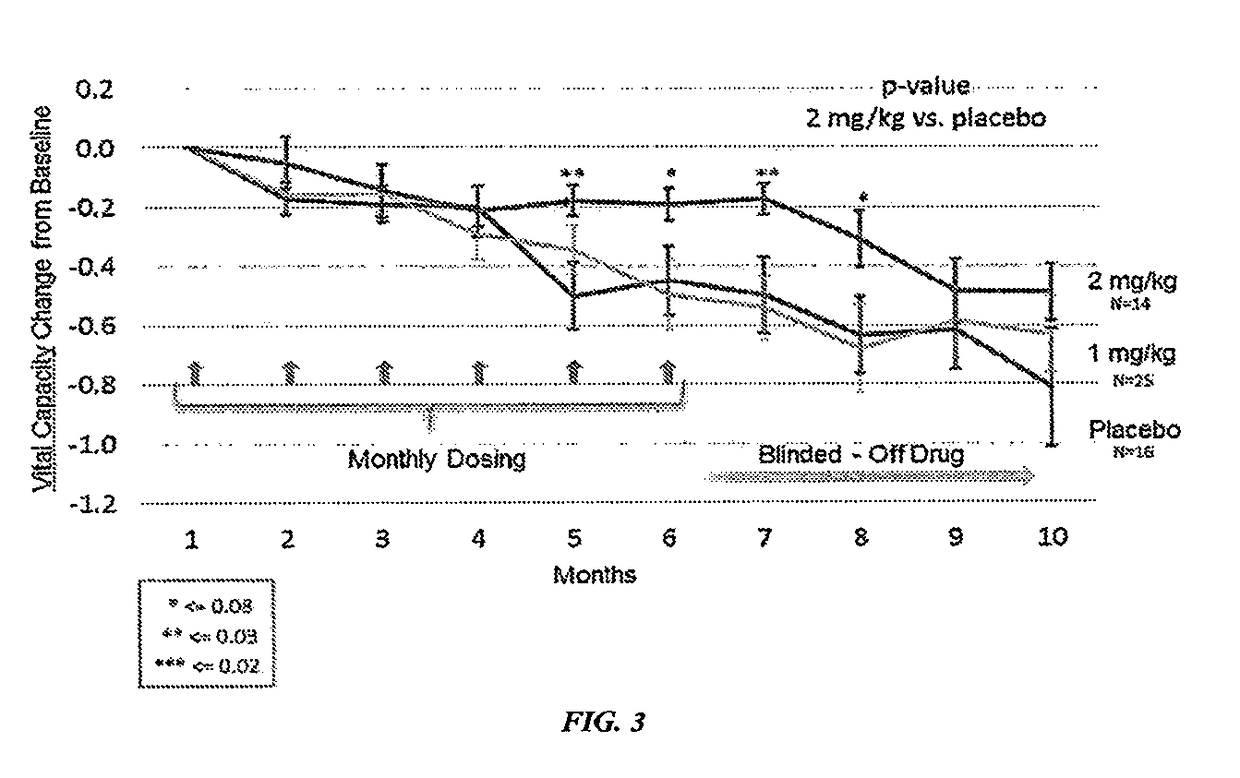Treatment of neurodegenerative disease with sodium chlorite
- Summary
- Abstract
- Description
- Claims
- Application Information
AI Technical Summary
Benefits of technology
Problems solved by technology
Method used
Image
Examples
example 1
of ALS Patients with Sodium Chlorite
[0427]Both phase 1 and 2A clinical trials using sodium chlorite in patients with ALS were completed. Sodium chlorite reversed markers of monocyte / macrophage activation in vitro and in vivo. In a double blind phase 2 study of sodium chlorite response to therapy was evaluated using a robust measurement of ALS disease activity termed the ALS functional rating scale-revised (ALS / FRS-R). The ALS-FRS is described by Cederbaum et al. (Journal of Neurological Sciences, vol 169, pp. 13-21). 25% of patients receiving the high dose of sodium chlorite (2 mg / kg) stopped progressing over a six month period as compared to placebo patients who had only a 10% non-progressor rate. This difference was statistically significant. Biomarkers that were associated with the group of patients whose disease halted during the trial (responders) showed several inflammatory biomarkers to be twice as high at baseline as compared to those patients who did not respond to sodium c...
example 2
of FTD Patients with Sodium Chlorite
[0429]To test whether FTD patients may have plasma factors elevated in comparison to controls, the following experiment was performed: Plasma specimens were obtained from the following groups for ELISA determination of various factor levels: FTD patients heterozygous for the PGN gene (14), Carriers of a PGN deficiency (17), and age matched controls (36). The following factors measured included CRP, IL-18, CCL18, CD14, LBP and CD163 (see FIG. 4A-G).
[0430]wr-CRP values in FTD were 2-fold higher than in the 2 control groups (see FIG. 4A). A subset of PGN heterozygous “carriers” (⅓) showed elevation in wr-CRP values similar to values in FTD patients (see FIG. 4B). Using the ALS median value cutoff of 1125 ng / ml, 80% of FTD patients were above the median ALS patient value, consistent with a higher level of inflammation in patients with FTD.
[0431]In addition, sCD163 levels were significantly higher in the FTD patient specimens as compared to the control...
example 3
enotype Study of A-T Patients
[0433]Heparinized blood from 10 A-T patients and 10 age-and-gender-matched controls was collected. Flow cytometry was used to assess the systemic immune alterations in A-T patients.
[0434]Flow cytometry assay: Measure T-cell and monocyte / macrophage cell activation markers, CD14 / HLA-DR and CD14 / CD16 expression, and CD4 / CD38 and CD8 / CD38 expression in A-T patients as compared to healthy controls by flow cytometry.
[0435]Compared to healthy controls, CD4 / CD38 reactivity was significantly lower in patients with A-T, indicating a clear T cell defect in A-T patients.
[0436]No difference was found on levels of monocyte activation between A-T patients and healthy controls, but there was a positive correlation of levels of HLA-DR on CD14 monocytes with the age of A-T patients.
PUM
 Login to View More
Login to View More Abstract
Description
Claims
Application Information
 Login to View More
Login to View More - R&D
- Intellectual Property
- Life Sciences
- Materials
- Tech Scout
- Unparalleled Data Quality
- Higher Quality Content
- 60% Fewer Hallucinations
Browse by: Latest US Patents, China's latest patents, Technical Efficacy Thesaurus, Application Domain, Technology Topic, Popular Technical Reports.
© 2025 PatSnap. All rights reserved.Legal|Privacy policy|Modern Slavery Act Transparency Statement|Sitemap|About US| Contact US: help@patsnap.com



